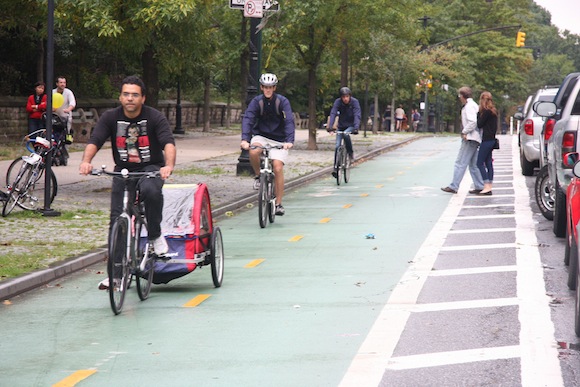
Since it was dropped on to the poor disenfranchised people of Park Slope, the Prospect Park West bike lane has been a contentious battleground of the city’s transportation policy. And because they’re here to use math to tell us all what’s what, the nerds at FiveThirtyEight took a look at how bike lanes affect traffic patterns around the country, including the PPW one. Their conclusion based on data from the city government? Traffic hasn’t become significantly worse since the bike lane opened.
The FiveThirtyEight post wasn’t only about the PPW bike lane, but rather a study in how good bike lane placement won’t lead to snarling traffic even though a single lane for cars has been taken away. In the case of the Prospect Park bike lane, the city government studied traffic patterns on morning and evening rush hours at the 11th Street and Carroll Street intersections of the bike lane, both before and after the bike lane was installed.
Using the numbers provided by the government, FiveThirtyEight divided the number of cars on the road at these times by Prospect Park West’s capacity, to get something called a volume-to-capacity ratio. The hgiher towards 1 the ratio gets, the more congestion What’s the word on PPW? The V/C ratio went up slightly, coming in at just over .5 on Carroll Street in the morning from just over .25, but not coming in above .5 for any other time and location. So, according to fancy nerd maths, any complaints you have about traffic spiking as a result of the bike lanes are probably in your head. Don’t agree? Take it up with Archimedes.
One Response to
Leave a Reply




What about the more relevant intersection of grand army plaza and PPW?